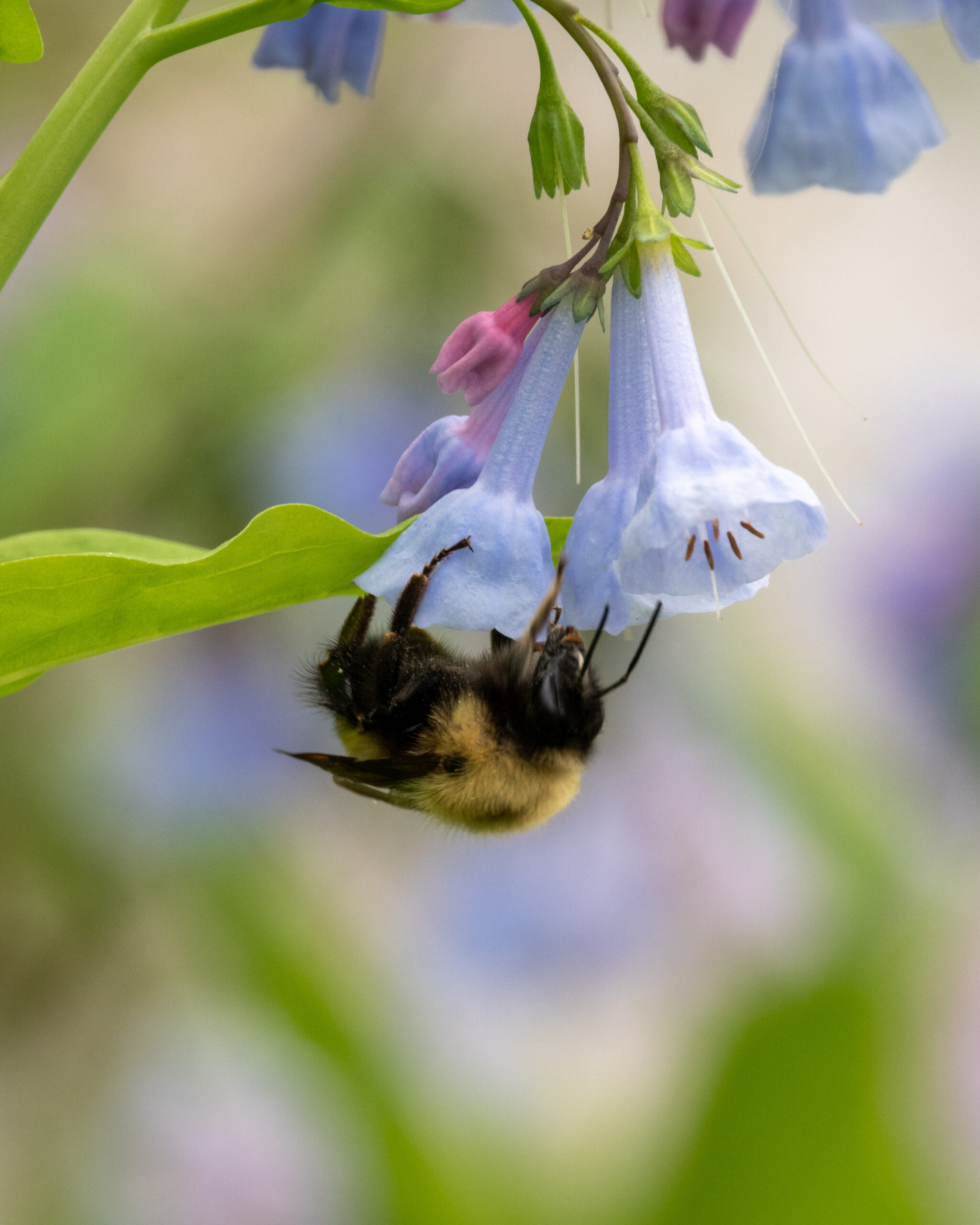
Springtime on the C&O Canal brings new blooms just in time for National Native Plant Month in April. 2024 will mark the fourth year since the Senate Resolution was passed in 2021 and the first year of the House Resolution. Celebrate at home by planting native wildflowers, removing invasive species in your garden, and spread the word about the importance of native plants in our local ecosystems.
Did you know that the C&O Canal National Historical Park (NHP) is one of the most biologically diverse parks, with one of the highest concentrations of rare, threatened and endangered plant species in the eastern United States? Help us preserve and protect the larger natural ecosystem of the C&O Canal. Get involved this April by giving a gift to the C&O Canal Trust or joining us this year for our public volunteer Canal Community Days events.
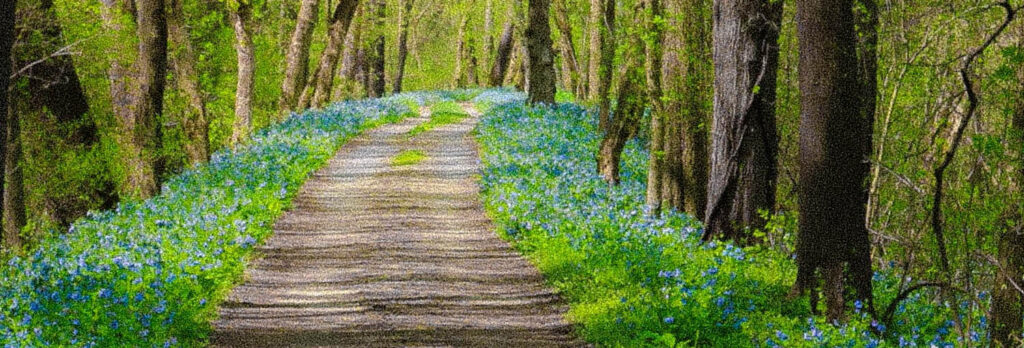
Image by Paul Graunke
Why are native plants so important? Why should we care?
- Native plants provide habitat and food for wildlife. They are the primary source of food and shelter for a wide range of wildlife species, including birds, insects, mammals, and reptiles. These plants provide essential nutrients and shelter for animals, including food for larvae and insects that pollinate flowers, fruits, and vegetables.
- Native plants support biodiversity. They provide food and shelter for insects, which, in turn, support other animals and plant species. Native plants also help to prevent soil erosion and maintain the balance of the ecosystem.
- Native plants are adapted to local conditions. They are acclimated to the local climate and soil, which makes them more resilient and better able to withstand drought, floods, and other environmental stresses. This means they require less maintenance and water, making them an excellent choice for homeowners and gardeners.
- Native plants improve soil health. They have deep root systems that help to improve soil health by increasing soil organic matter and reducing erosion. This means that they can help to prevent nutrient runoff and protect water quality.
- Native plants have cultural significance. They have been used for centuries by indigenous communities for medicinal, food, and spiritual purposes. By preserving native plant species, we can help to protect and celebrate cultural heritage.
Below are some of the native spring wildflowers found within the C&O Canal. While you are out in the park, see if you can spot them! We encourage you to submit pictures of plants you find in the Park to our monthly photo contest.
Dutchman’s Breeches
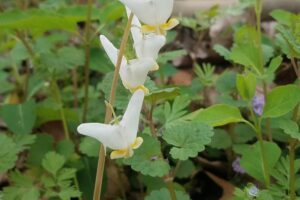
Photo by Eileen Wise-Hite
Dicentra cucullaria
Dutchman’s Breeches are poisonous to humans and animals in large doses. It relies on bees for pollination and seed spreading.
Bloodroot
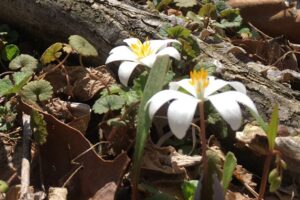
Photo by Wendelyn Duke
Sanguinaria canadensis
Bloodroot is used as a natural red dye and insect repellent. The primary pollinators for Bloodroot are bees and beetles.
Trout Lily
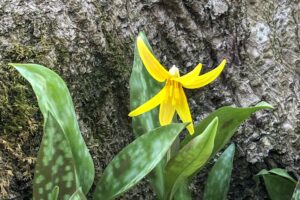
Photo by Charissa Hipp
Erythronium americanum
Trout Lillies have the ability to store phosphorus., a vital nutrient for soil health and surrounding fauna.
Violets
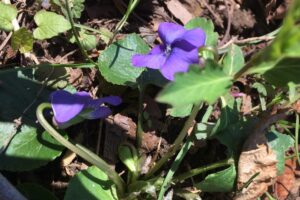
Photo by Nanette Nyce
Viola papilionacea and other V. spp.
Violets are an important source of food for many animals present in the park including Fritillary butterfly caterpillars. It comes to no surprise that they are pollinated by butterflies and bees. A unique feature however is that they spread their own seeds by launching them as far as 2 meters away.
Spring Beauties
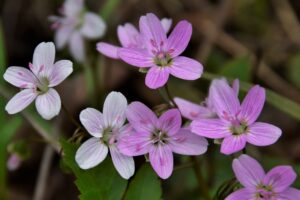
Photo by Jan Branscome
Claytonia virginica
Spring beauties act as a food source for people and small rodents alike. The primary pollinators for Spring Beauties are bees and butterflies.
Blue Phlox
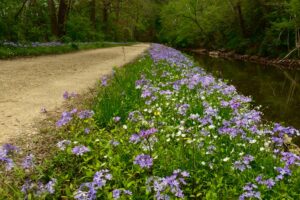
Photo by Ruth Wittersgreen
Phlox divaricata
Blue Phlox provides sweet nectar to any insect able to reach, though do to the long neck of the flower that honor is mostly relegated to butterflies, moths and few bees species. Butterflies are the most successful pollinators of Blue Phlox.
May Apple
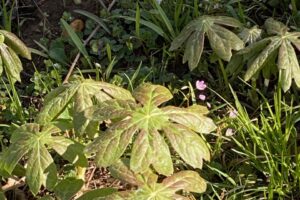
Photo by Jonathan E. Hardis
Podophyllum peltatum
The May Apple plant is poisonous except for the ripened fruit, which is eaten by rodents, grackles, and box turtles. The toxin found in it is used to inhibit cell growth, such as for skin cancer.
Jack in the Pulpit
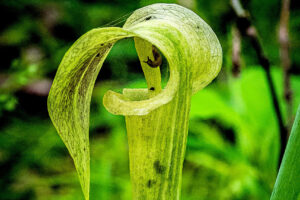
Photo by Paul Graunke
Arisaema triphyllum
Jack in the Pulpits have an acid within them that is poisonous as well as caustic, though the plant itself can be prepared like a root vegetable. The primary pollinator for them are fungus gnats.
Wild Ginger
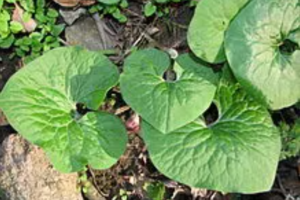
Photo from the NPS
Asarum canadense
Wild Ginger is a source of food primarily for birds, it can be consumed by humans but should not be in large quantities. The primary pollinator for it is small black flies, while ants spread the seeds.
Top Image by Jeff Orner






